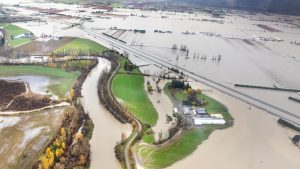Green works very well with grey.
It’s why Canadian cities and towns should rethink how they tackle infrastructure projects, placing emphasis on incorporating green technology into short and long-term infrastructure replacement and improvement programs, says Rohan Lilauwala, program manager of the Green Infrastructure Foundation (GIF).
Many large U.S. cities are taking a holistic approach, spending big bucks on green infrastructure — New York City and Philadelphia are prime examples — as part of comprehensive infrastructure improvement programs because “they have figured out…the existing (conventional) approach costs more and provides less social and environmental benefits,” Lilauwala told delegates at the Grey to Green Conference recently in Toronto.
Green infrastructure helps reduce the amount of grey infrastructure required while improving its durability/lifespan, said Lilauwala, whose organization was founded in 2007 to promote the design, installation and maintenance of green infrastructure. Examples include bioswales, green roofs, rain gardens and street trees.
So why haven’t more communities jumped on the bandwagon?
“Most people agree that trees are good…and rain gardens capture water, but we haven’t been able to quantify and monetize the value as well as we should, so we are not incorporating them into our decision-making processes.”
In response, GIF has developed a two-pronged plan for municipalities which includes a cost-benefit matrix “that lets us analyze (and quantify) 10 benefits and two costs for 10 different types of green infrastructure on a per square metre basis,” Lilauwala told the seminar.
“The beauty of this approach is we can scale it up and down…to get a very quick aggregate level analysis of proposals, ideas or visions for a community.”
The cost benefit matrix is based on a literature review and market survey. It has been evaluated by peers, added Lilauwala.
Among the 10 green infrastructure categories are green roofs and walls, bioswales, permeable surfaces, meadows and trees. Benefits of each vary depending on design, size and other factors.
As a case in point a type of tree, its siting, age, size and soil conditions will help determine its benefits.
Each green benefit is measured in quantifiable units, points out Lilauwala.
For example, stormwater management might be measured by the litre, electricity in kilowatt hours and sulfurous oxides and other air particulates in kilograms captured.
Arriving at a cost per unit can be complex and is determined by a number of variables from each community, but Lilauwala said that ecological economists have come up with a number of different market and non-market methods to value the eco-systems services by green infrastructure.
Modelling tools, he said, are readily available for calculating unit costs for issues such as stormwater and energy.
Once the value of unit is determined, he said the number is multiplied by the number of units of benefit received from each category of green infrastructure to determine the square metre value.
“The great part of this dollar per square metre value is it can be put into a lot of different decision-making frameworks…to fit your circumstances.”
While there are a number of quantifiable benefits to green infrastructure features, less tangible are other benefits such as “to our health, productivity and the prevention of crime,” he told the seminar audience.
Even if green infrastructure “made a small dent” in the cost of Ontario’s health care and education, the savings would be significant, he added.
Green also cuts the costs of grey.
A rain garden, for instance, can minimize the cost of pumping and treating water on a property, Lilauwala said.
He admits that GIF’s green cost benefits tool is not without limitations.
“We don’t have the resources, the time, the energy or the money to score a bull’s-eye but we are going to hit the dartboard.”
“It gets the (green infrastructure) conversation started and sets the stage for detailed, project-specific study and feasibility plans.”
The second part of GIF’s plan is to conduct a one-day intensive charrette that has the design and development players of a site devising creative solutions using green infrastructure to problems such as potential flooding.
As an example, GIF and others, including a site developer in Vaughan, Ont. arrived at a solution using green infrastructure for a greenfield site earmarked for high-density development.
“The plans we generated made him (the developer) change his original development.”











Recent Comments
comments for this post are closed